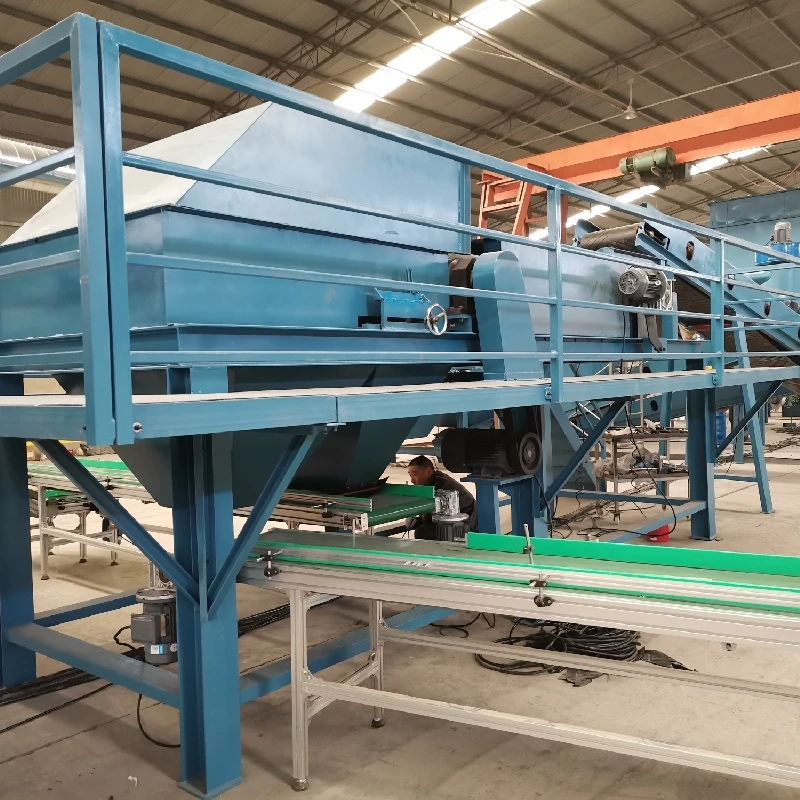

nov . 21, 2024 21:26 Back to list
How to Build an Eddy Current Separator
Eddy current separators are critical pieces of equipment in the recycling industry, primarily used to separate non-ferrous metals from a mixed waste stream. They work on the principle of electromagnetic induction but can be a bit complex in their construction and operational setup. This article will outline the steps needed to build an eddy current separator, providing a comprehensive overview for those interested in this technology.
Understanding the Principle
Before diving into the construction process, it is essential to understand how an eddy current separator operates. When a conductive material enters the magnetic field created by a rotating drum, it generates circulating currents within the metal, known as eddy currents. These currents create their own magnetic field that opposes the applied magnetic field, causing the material to be expelled away from the non-conductive materials.
Materials Needed
To build an eddy current separator, you will significantly require the following materials
1. Magnetic Drum The heart of the separator where the magnetic field is generated. Choose a high-quality, strong rare-earth magnet for better performance. 2. Drive Motor A motor to rotate the drum, typically requiring a variable speed controller to adjust the drum's speed based on the material being processed. 3. Housing Frame A robust structure to hold all components in place. Steel is commonly used due to its durability and strength. 4. Feed System This can include a hopper and conveyor belt to feed materials into the separator. 5. Discharge Chutes To direct the separated materials into different collection containers. 6. Electrical Components Wiring, switches, and a power supply to energize the motor and drum. 7. Cooling System Depending on the size and scale, cooling may be necessary to prevent overheating of the motor.
Step-by-Step Construction
1. Design the Layout Before starting the build, sketch out a layout of the entire separator. This should include the position of the drum, motor, feed system, and discharge chutes. Planning is crucial to ensure all components fit together seamlessly.
2. Construct the Frame Use steel to build a sturdy frame that will support the drum and motor. Ensure it is stable enough to handle vibrations and heavy loads during operation. Cut the steel to size and weld or bolt the components as necessary.
3. Install the Magnetic Drum Attach the magnetic drum securely to the frame. It should be free to rotate but also aligned accurately to prevent any operational issues.

4. Set Up the Drive Motor Mount the motor in a position that it can effectively drive the drum via a belt or direct coupling. Make sure to use a motor that provides enough torque for the operation of the drum.
5. Add the Feed System Integrate a hopper and conveyor belt to feed materials into the system. The feed system should direct the materials smoothly and consistently into the separator without causing jams.
6. Connect Electrical Components Install the electrical wiring, including switches and any control panels. Ensure safety features are in place, such as emergency stop buttons.
7. Install Discharge Chutes Position the discharge chutes at appropriate angles to separate ferrous and non-ferrous materials efficiently. They should be long enough to prevent cross-contamination.
8. Cooling System (if necessary) If your setup is large, consider installing a cooling system that prevents overheating of the motor and drum.
9. Testing and Calibration Before using the separator for actual processing, conduct tests to ensure everything operates smoothly. Adjust the drum speed and monitor the efficacy of separation.
Safety Considerations
While building and operating an eddy current separator, it’s important to consider safety. Wear appropriate protective gear, ensure electrical components are correctly installed to avoid short circuits, and regularly inspect for wear and tear.
Conclusion
Constructing an eddy current separator requires careful planning and a good understanding of the principles involved. By following the outlined steps and considerations, you can create an efficient separator that improves the recycling process and enhances the sustainability of operations. Regular maintenance and upgrades will help ensure your separator remains effective and reliable for years to come.
Latest news
Troubleshooting Common Eddy Separator Problems
NewsJul.04,2025
The Role of Metal Recycling Plants in Circular Economy
NewsJul.04,2025
The Impact of Recycling Line Pickers on Waste Management Costs
NewsJul.04,2025
Safety Features Every Metal Shredder Should Have
NewsJul.04,2025
How Industrial Shredders Improve Waste Management Systems
NewsJul.04,2025
How Cable Granulators Contribute to Sustainable Recycling
NewsJul.04,2025